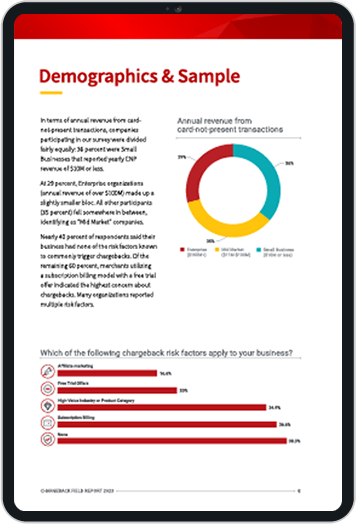Subscription Scams Affect One in Ten Consumers. Are You Prepared to Combat Them?
In the grand scheme of things, scams that target subscription sellers aren’t as prevalent as some other threat sources. Chargeback fraud and refund abuse, for example, both cost merchants tens of billions of dollars annually.
That doesn’t mean you can afford to ignore subscription scams, though.
Fraudsters can use bait-and-switch tactics, free trial traps, misleading terms, and too-good-to-be-true offers to entice buyers into giving up their credit or debit card details. Once subscribed, the service becomes difficult — or sometimes impossible — to cancel.
According to the European Commission, at least 10% of consumers have been a victim of a subscription scam in the past.
Recommended reading
- Negative-Option Billing: How to | Pros & Cons | Case Studies
- The Top 12 Subscription Billing Platforms of 2025
- Visa Account Updater: What it Does & How it Works
- Involuntary Churn | What is it? How to Avoid Lost Sales
- FTC Publishes “Click-to-Cancel” Rule: Here’s What to Know
- Which Subscription Billing Model is Right for Your Business?
Examples of Subscription Scams
Subscription scammers use different tactics, but all have one common goal: obtain a victim’s payment details, and then force them into paying for recurring services they don’t need.
Common schemes used to trick victims include:
A subscription that is easy to sign up for and difficult to cancel is a prime example of a dark pattern known as a “roach motel.” The recent “click-to-cancel” ruling by the FTC in late 2024 made this practice illegal, though. Subscription service providers are now required “to make it as easy for consumers to cancel their enrollment as it was to sign up.”
How a Typical Subscription Scam Works
All subscription scams rely on disingenuous and underhand tactics at one or multiple stages of the process. The “scam” could happen at signup, or the scammer may wait until cancellation to bait victims into paying more than they expect (or longer than they anticipate) for a service.
There are several points at which a scammer could spring their trap:
Phase
Opportunity for Fraud
Advertising
- Unclear terms
- Disguising recurring purchases as one-time payments
- Enticing victims with prizes, or giveaways for subscribing
At Signup
- Additional charges hidden in fine print
- Base price is free, but shipping or processing fees apply
- Dark UX patterns automatically opt victims into add-on services
Once Subscribed
- Unclear billing descriptors make it difficult to identify charges
- Billing occurs on an irregular cadence, making it hard to track
- Additional charges (maintenance fees, service fees, etc.) are assessed
Upon Cancellation
- Difficult to cancel (e.g. have to call, use live chat, or mail a letter)
- Long cancelation notice periods; victim is billed after canceling
- Cancellation fees that were not (or were poorly) disclosed at signup
Impact on Payments & Commerce Ecosystem
Subscription scams obviously harm cardholders. But fraudulent subscription services and bad faith tactics take a toll on merchants and the broader payments ecosystem, too.
For starters, it creates more work for regulators like the FTC and the European Commission, as well as for card networks.
Dealing with bureaucratic red tape generated due to subscription scams can hamstring honest eCommerce businesses. They also divert regulators’ attention and effort away from combatting other forms of fraud, like wire fraud or synthetic identity theft.
Apart from being costly, these anti-fraud initiatives introduce friction into checkout and customer service workflows, making the shopping experience less enjoyable for buyers. Overcorrections in fraud-fighting efforts may also result in lost revenue, since genuine customers may be misidentified as threats and blocked from checking out.
Fraud has a multiplicative effect. According to LexisNexis Risk Solutions, every dollar of fraud ultimately costs US eCommerce merchants $4.61 (and Canadian merchants $4.52) to detect, prevent, fight, and resolve.
In response, some online marketplaces may also tighten their onboarding standards, making it more difficult for sellers to qualify for accounts. Marketplaces may also become more “trigger happy” as a knee-jerk reaction, rejecting legitimate applicants or banning rule-abiding merchants for perceived subscription infractions. For customers, this means less competition, fewer choices, and potentially higher prices.
Of course, scams may cause customers to be wary and suspicious of the subscription model altogether, even if it is practiced by honest merchants. As customer trust recedes and skepticism takes hold, legitimate businesses could see their top and bottom lines threatened by fraud they played no part in perpetrating.
Subscription Scam Case Studies
So, you know the basic idea behind a subscription scam. But, how do these work in a practical, real-world sense? Well, here are few examples of past subscription scams that may help illustrate the idea for you:
#1 | Mobile App Scams on the Apple App Store
What happened: Several apps were discovered charging users up to $300 per year for basic functions like flashlight utilities or wallpaper downloads. These apps used dark patterns, including deceptive “free trials” that auto-renewed after a very short period.
Fallout:
- Apple removed multiple apps and refunded users.
- The case sparked media attention and discussions around “fleeceware,” or apps that technically follow the rules but still manipulate users.
Lesson: Even tightly controlled ecosystems like app stores can become breeding grounds for recurring billing abuse.
#2 | Proactiv & Other Wellness Brands (US FTC Crackdowns)
What happened: The FTC fined several companies, including the makers of Proactiv, for unlawful enrollment in recurring subscription programs. Consumers thought they were making one-time purchases but were enrolled in auto-ship programs.
Fallout:
- Fines in the millions of dollars.
- Strict consent requirements introduced.
Lesson: Health and beauty brands using continuity billing are under heavy regulatory scrutiny.
#3 | ABCmouse – $10 Million FTC Penalty (2020)
What happened: Edtech platform ABCmouse was charged for making it difficult for users to cancel memberships and failing to disclose auto-renewals clearly.
Fallout:
- $10M settlement with the FTC.
- Required to implement improved consent and cancellation flows.
Lesson: Even educational platforms can fall afoul of subscription transparency laws if UX is misleading.
Best Practices for Subscription Transparency
Subscription scams threaten the credibility of all merchants in the subscription and free trial space.
In response, merchants need to be proactive and intentional if they’re going to maintain and defend hard-earned customer goodwill. Some measures that can help push back against subscription scams include:
#1 | Implementing Transparent Billing & Cancellation Flows
A straightforward cancellation flow used to be a long-term way to build trust. Now that the FTC’s “click-to-cancel” rule is in place, though… it’s a must. It’s best to steer clear of anything that could be construed as trickery, dark patterns, or manipulation. Presenting a subscription offer plainly, fairly, and transparently — whether during signup or cancellation — can help merchants build credibility and win customers.
#2 | Issuing Email Reminders Before Billing
Merchants should give customers advance notice before they are billed to avoid confusion (and resulting chargebacks). This is especially true for merchants who bill infrequently (e.g. quarterly or annually), or at irregular intervals.
#3 | Drafting Plain-Language Policies
The fine print should not be a place to hide pricing or cancellation terms. Instead, subscription agreements should be clear, unambiguous, and easy to understand. Doing so means that customers are more likely to know what they signed up for, and less likely to file chargebacks out of confusion.
#4 | Making it Easy to Unsubscribe & Cancel
Customer churn is never pleasant. But, then again, neither are fines or chargebacks, which are the inevitable outcome of those hard to cancel “roach motel” subscription services. Besides, customer-friendly unsubscribe and cancellation practices help strengthen trust and generate goodwill.
#5 | Obtaining Explicit & Informed Consent at Signup
Subscription scammers auto-check consent boxes and sign victims up for add-on services. Truthful merchants should aspire to do the opposite by obtaining voluntary and explicit consent from customers prior to billing them. While add-on services can be offered, pricing and terms should be disclosed separately, and cardholders should be given an option to decline them.
#6 | Deploying Third-Party Subscription Management Tools
Subscription management tools help merchants manage the subscription lifecycle — including signups, renewals, and cancellations — all in one place. By using third-party tools to centralize their processes and augment their analytics capabilities, merchants can design better subscription plans, enhance customer lifetime values, and reduce subscriber churn.
#7 | Leveraging Chargeback Alert Systems
Cardholders who find it difficult to cancel will resort to chargebacks, which can be costly for merchants to receive, let alone contest. To prevent chargebacks, businesses can use services like Verifi CDRN or Ethoca Alerts. These chargeback alert providers notify merchants about pending disputes and allow sellers to issue preemptive refunds to prevent chargebacks from occurring.
Frustration isn’t the only reason cardholders resort to chargebacks. Instead, many simply don’t know better. According to the 2024 Chargeback Field Report, more than 75% of surveyed cardholders believe a chargeback is equivalent to a refund.
Chargeback alerts are just one tool that subscription merchants can use to prevent chargebacks.
A truly robust approach to chargeback management, however, should involve a multi-layered approach that makes use of complementary detection and prevention tools — like Chargeback911®’s end-to-end chargeback mitigation solution.
Curious about tackling chargebacks as a subscription seller? Reach out to us for a no-obligation ROI analysis today.
FAQs
How do I get out of subscription scams?
To get out of a subscription scam, reach out to your issuing bank and file a chargeback or request a stop payment. Additionally, you can report the scam to the Federal Trade Commission (FTC).
How do subscription scams work?
Subscription scams use deceptive or dishonest tactics to lure victims into signing up for services they don’t need. One of the most common scam tactics is a free trial trap, in which hidden fees and charges attached to a trial period effectively force you to pay for the service upfront. Other renewal scam tactics include difficult- or impossible-to-cancel subscriptions, services with charges intentionally obscured in the fine print, or data theft scams that masquerade as legitimate subscription services.
What to do if a subscription service won't let you cancel?
If a subscription service won’t let you cancel, consider contacting customer service. If this fails, contact your issuer and either request a stop payment or file a chargeback.
How do I block a subscription payment?
To block a subscription payment, contact the service provider and ask to cancel, or file a chargeback or a stop payment request with your financial institution.
What is subscription abuse?
Subscription abuse occurs when customers violate the terms and conditions of a subscription service to avoid payment or take advantage of promotions they are not entitled to. Subscription abuse can also occur when scammers, masquerading as legitimate businesses, use disingenuous tactics to lure victims into signing up for recurring services they don’t want or need.














